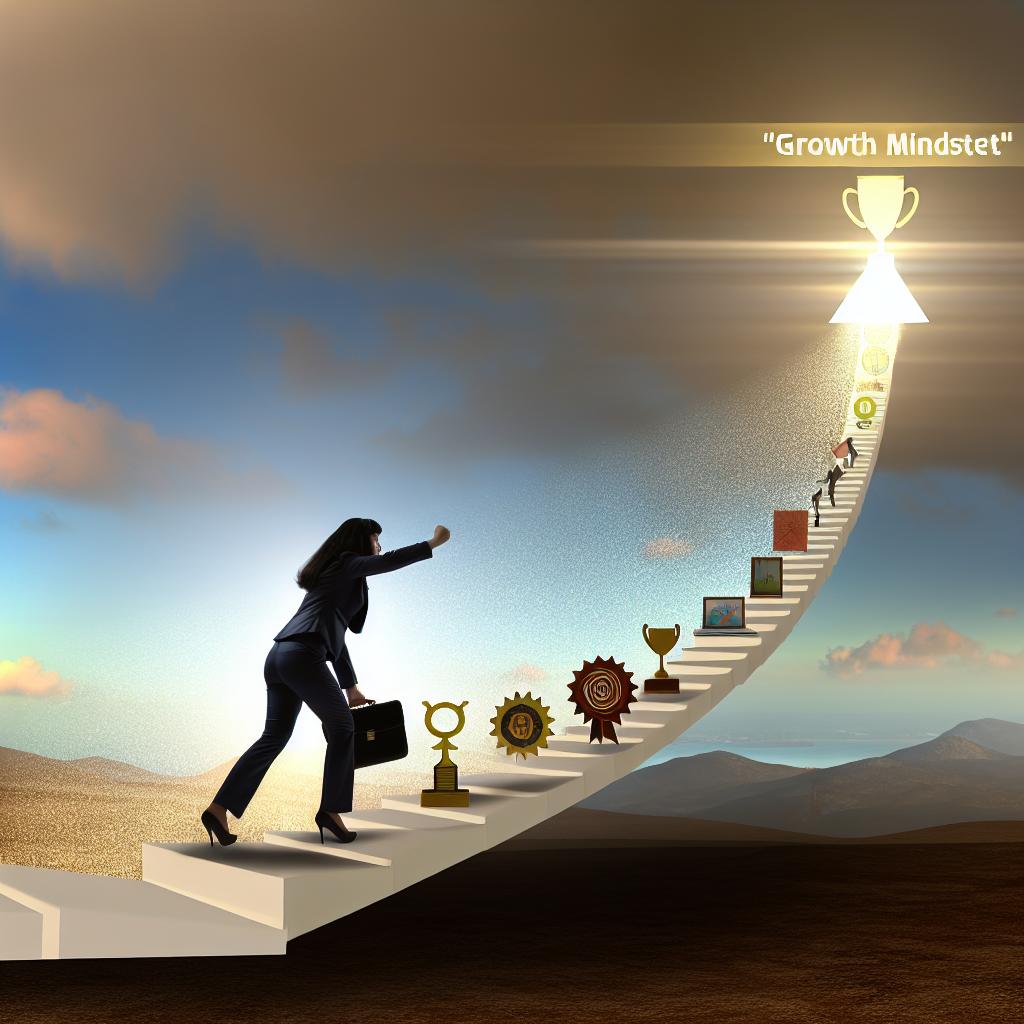The Concept of a Growth Mindset
A growth mindset is the belief that abilities and intelligence can be developed with effort, learning, and persistence. This concept was introduced by psychologist Carol Dweck, who contrasted it with a fixed mindset. In a fixed mindset, individuals perceive their abilities as static and unchangeable attributes. Such a mindset can limit one’s potential because it fosters an aversion to challenges and a reluctance to seek out learning opportunities. On the other hand, understanding and adopting a growth mindset is crucial for personal and career development as it empowers individuals to pursue mastery and improvement over simply maintaining their current abilities.
An individual with a growth mindset approaches life and work with a sense of enthusiasm for continuous learning. They understand that stumbling blocks are not a reflection of their worth or ultimate capability but are instead stepping stones that can lead to greater competence and understanding in the long term. This mindset can be transformative because it encourages an attitude that is receptive to education and self-improvement.
Impact on Career Development
Adopting a growth mindset has a profound impact on career development. It influences how individuals perceive success and failure, and this perception can alter career trajectories significantly. When individuals embrace a growth mindset, they interpret challenges not as barriers but as chances for development. This transformation in perspective allows them to persist in the face of setbacks, enabling them to learn from criticism constructively and find inspiration in others’ success.
In a career context, individuals with a growth mindset are often those who volunteer for challenging projects, seek out training and professional development opportunities, and consider feedback as vital for personal growth. They are agile learners and adapt swiftly to change, which can be an invaluable trait in fast-paced industries. Moreover, such individuals are typically more innovative. They are more willing to propose bold ideas in meetings or suggest improvements to existing processes, demonstrating their commitment to progress.
Benefits of a Growth Mindset in the Workplace
A workplace environment that cultivates a growth mindset can generate numerous benefits. Employees who embrace this mindset are more likely to initiate and pursue new challenges and opportunities for growth. When they encounter setbacks, they interpret these instances as valuable learning experiences rather than as failures, helping to create a culture of resilience within the organization.
In workplaces that encourage a growth mindset, employees often exhibit higher levels of innovation, adaptability, and productivity. This is because they are motivated by the process of learning and development, rather than just the end results. Such a culture inspires a sense of ownership among employees, encouraging them to contribute more actively to the organization’s objectives and goals.
Furthermore, organizations that promote a growth mindset can better retain top talent. Employees are less likely to leave when they see a path for growth and development, and when they feel that their potential is recognized and nurtured. Companies can also benefit from reduced employee burnout, as those with growth mindsets tend to manage stress better by viewing pressure as a chance to surpass previous performances, rather than as a threat to their capability.
Developing a Growth Mindset
Developing a growth mindset does not occur overnight; it necessitates a conscious effort to alter one’s way of thinking. Below are guiding principles that can facilitate the cultivation of such a mindset:
Embrace Challenges: View challenges as opportunities for growth rather than obstacles. This shift in perspective encourages individuals to tackle difficult projects or roles, where they can learn new skills and demonstrate their prowess.
Persist Through Difficulties: Cultivating resilience is paramount. When faced with challenges, individuals should remember that perseverance is integral to improvement. This involves continuously pushing oneself, even when the going gets tough.
Learn from Criticism: Constructive feedback should not be perceived as a personal attack but as a tool for development. By reframing criticism as valuable insights, individuals can make informed adjustments to their approaches or mindsets.
Be Inspired by Others: Motivation can be drawn by observing the success of others. Colleagues and leaders in the field can be excellent sources of inspiration. Learning from their paths and achievements can offer not only insights into how success was achieved but also encouragement to emulate or surpass those benchmarks.
Adopting these principles requires mindfulness and practice. Regular reflection on personal beliefs and attitudes can aid in recognizing fixed mindset tendencies, which can then be actively countered with growth-oriented behavior and thought patterns.
Conclusion
Incorporating a growth mindset into career development is essential for ongoing professional success. By embracing the belief that an individual’s ability can be cultivated through dedication and effort, professionals can leverage this mindset to continuously improve and achieve their full potential. This approach fosters ongoing learning, greater adaptability, and a higher level of persistence in the face of challenges. It reshapes the way setbacks and feedback are perceived, turning them into fuel for further development.
The pursuit of a growth mindset is a lifelong journey, and even incremental changes in our mindset can have profound effects on our careers and personal lives. Those interested in further exploring this concept may wish to consult additional resources such as scholarly articles, published research, and workshops that delve into the applications and further nuances of a growth mindset. As professionals or organizations, the commitment to a growth mindset can pave the way for significant accomplishments and breakthroughs, making it an invaluable trait in today’s constantly evolving work environment.
This article was last updated on: August 3, 2025

